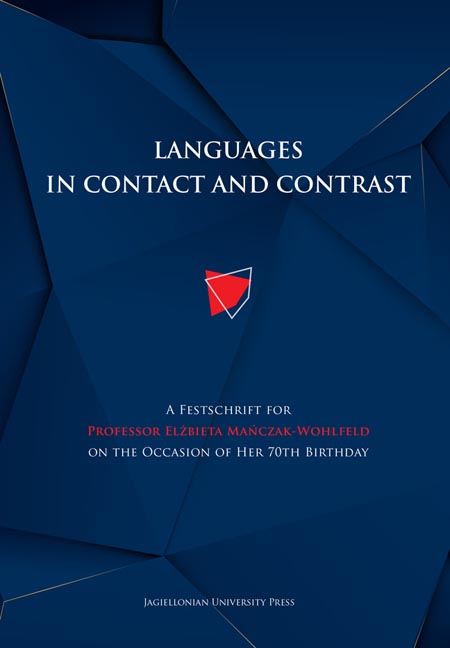 Languages in Contact and Contrast
Languages in Contact and Contrast Published online by Cambridge University Press: 14 October 2023
Introduction
The contemporary situation of Yiddish is unusual. On the one hand, it is one of dying languages – a consequence of the Shoah – while on the other hand, it is a strongly resurgent language in Jewish Orthodox communities (Haredi or Hasidic Jews), most of all in the USA and Israel. Another peculiarity consists in the fact that the growing numbers of orthodox Yiddish speakers have little, if any, impact on the surrounding language and culture, as they do not mix with the community at large.
The increasingly marked presence of Yiddish in American English (our focus here) can be ascribed, ironically perhaps, to the nostalgia for the lost world of Jewishness. After the European Yiddishland was annihilated by the Germans, the bilingual (Yiddish-American) life of the pre-war immigrants, who had cultivated their original language in newspapers, publications and theatre (nourished by close cooperation with writers and artists from their home countries), gave way to full assimilation which led in time to renewed interest in things Jewish. In 1989, the following upbeat assessment was offered by Gene Bluestein in the introduction to the first edition of his dictionary of Yiddish in American life and literature:
The presence of Yiddish is being felt more pervasively in American culture than ever before, not only in literature but also in the mass media. It is difficult to imagine how anyone can read Saul Bellow’s Herzog or Philip Roth’s Portnoy’s Complaint without a gloss of the Yiddishisms they employ so frequently. The same must be said for a book like Sophie’s Choice, even though the author is not Jewish. (Bluestein 1998: XX)
Almost ten years later, in the introduction to the dictionary’s second edition, Bluestein claimed that:
The influence of Yiddish has continued and is now found in almost all of the other ethnic sources of American literature, as well as in the mainstream language itself. Some words […] have become standard and are not written in italics or any other special print. Other words, especially dietary terms […] are equally well known among most Americans.
To save this book to your Kindle, first ensure [email protected] is added to your Approved Personal Document E-mail List under your Personal Document Settings on the Manage Your Content and Devices page of your Amazon account. Then enter the ‘name’ part of your Kindle email address below. Find out more about saving to your Kindle.
Note you can select to save to either the @free.kindle.com or @kindle.com variations. ‘@free.kindle.com’ emails are free but can only be saved to your device when it is connected to wi-fi. ‘@kindle.com’ emails can be delivered even when you are not connected to wi-fi, but note that service fees apply.
Find out more about the Kindle Personal Document Service.
To save content items to your account, please confirm that you agree to abide by our usage policies. If this is the first time you use this feature, you will be asked to authorise Cambridge Core to connect with your account. Find out more about saving content to Dropbox.
To save content items to your account, please confirm that you agree to abide by our usage policies. If this is the first time you use this feature, you will be asked to authorise Cambridge Core to connect with your account. Find out more about saving content to Google Drive.